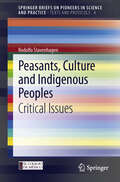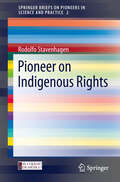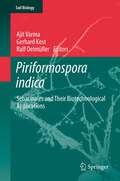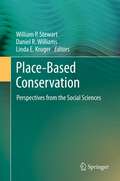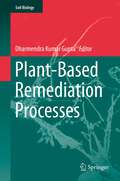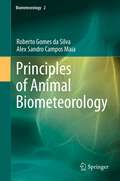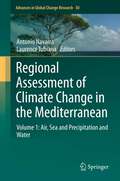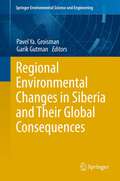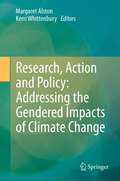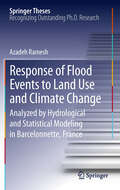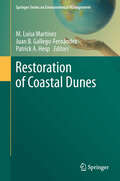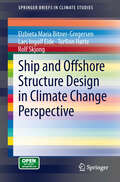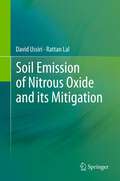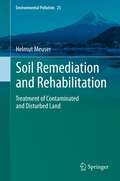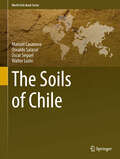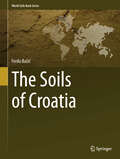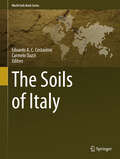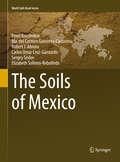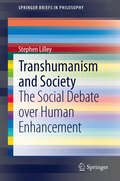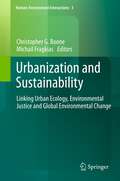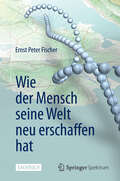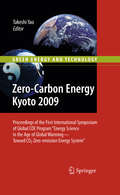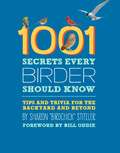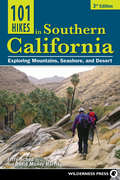- Table View
- List View
Peasants, Culture and Indigenous Peoples
by Rodolfo StavenhagenThis last volume in a trilogy published on the occasion of the 80th birthday of Rodolfo Stavenhagen, professor emeritus of El Colegio de Mexico, includes eight essays on Peasants, Culture and Indigenous Peoples: Critical Issues; Basic Needs, Peasants and the Strategy for Rural Development (1976); Cultural Rights: a Social Science Perspective (1998); The Structure of Injustice: Poverty, Marginality, Exclusion and Human Rights (2000); What Kind of Yarn? From Color Line to Multicolored Hammock: Reflections on Racism and Public Policy (2001); The United Nations Special Rapporteur on the Rights of Indigenous Peoples (2012); A Report on the Human Rights Situation of Indigenous Peoples in Asia (2007); Report on the Impact of Megaprojects on the Rights of Indigenous Peoples (2003); and Study Regarding the Best Practices to Implement the Recommendations of the Special Rapporteur (2007). These texts address human rights issues, especially those that arose when Stavenhagen was servinged as United Nations special rapporteur on the rights of indigenous peoples.
Pioneer on Indigenous Rights
by Rodolfo StavenhagenOn the occasion of the 80th birthday of Rodolfo Stavenhagen, a distinguished Mexican sociologist and professor emeritus of El Colegio de Mexico, Úrsula Oswald Spring (UNAM/CRIM, Mexico) introduces him as a Pioneer on Indigenous Rights due to his research on human rights issues, especially when he served as United Nations Special Rapporteur on the rights of indigenous peoples. First, in a retrospective Stavenhagen reviews his scientific and political work for the rights of indigenous peoples. Seven of his classic texts address Seven Fallacies about Latin America (1965); Decolonializing Applied Social Sciences (1971); Ethnodevelopment: A Neglected Dimension in Development Thinking (1986); Human Rights and Wrongs: A Place for Anthropologists? (1998); Indigenous Peoples and the State in Latin America: An Ongoing Debate (2000); Building Intercultural Citizenship through Education: A Human Rights Approach (2006); and Making the Declaration Work (2006). This volume discusses the emergence of indigenous peoples as new social and political actors at the national level in numerous countries, as well as on the international scene. This book introduces a trilogy of Briefs on Rodolfo Stavenhagen published in the same series Pioneers in Science and Practice.
Piriformospora indica
by Ajit Varma Gerhard Kost Ralf OelmüllerSebacinales have emerged as a fascinating order with mutualistic plant-fungal symbionts that consists of exclusively beneficial fungi. This volume of Soil Biology presents an overview of the current results in Sebacinales research with a focus on the potential of these fungi in crop improvement and stress tolerance. The authors demonstrate that Sebacinales are not only extremely versatile in their associations with roots, but are also almost universally present as symptomless endophytes. With this extraordinary diversity, Sebacinales with the key fungus Piriformospora indica might possess remarkable significance in natural ecosystems. Their biotechnological applications are expected to improve the quality of crops while maintaining ecologically and economically sustainable production systems.
Place-Based Conservation
by Linda E. Kruger Suzette Dailey William P. StewartThe concept of "Place" has become prominent in natural resource management, as professionals increasingly recognize the importance of scale, place-specific meanings, local knowledge, and social-ecological dynamics. Place-Based Conservation: Perspectives from the Social Sciences offers a thorough examination of the topic, dividing its exploration into four broad areas. Place-Based Conservation provides a comprehensive resource for researchers and practitioners to help build the conceptual grounding necessary to understand and to effectively practice place-based conservation.
Plant-Based Remediation Processes
by Dharmendra Kumar GuptaPhytoremediation is an emerging technology that employs higher plants for the clean-up of contaminated environments. Basic and applied research have unequivocally demonstrated that selected plant species possess the genetic potential to accumulate, degrade, metabolize and immobilize a wide range of contaminants. The main focus of this volume is on the recent advances of technologies using green plants for remediation of various metals and metalloids. Topics include biomonitoring of heavy metal pollution, amendments of higher uptake of toxic metals, transport of heavy metals in plants, and toxicity mechanisms. Further chapters discuss agro-technological methods for minimizing pollution while improving soil quality, transgenic approaches to heavy metal remediation and present protocols for metal remediation via in vitro root cultures.
Principles of Animal Biometeorology
by Roberto Gomes da Silva Alex Sandro Campos MaiaThe book begins by describing in detail the mechanisms of energy exchange - radiative, convective, conductive and evaporative - together with techniques for their determination. The discussion extends to the importance of CO2, ozone and methane, together with that of aerosol pollutants and the evolution of atmospheric CO2. Subsequent chapters apply the results of the biophysical methods to mammals, birds and aquatic animals. Discussion includes problems of shelter and shade for animals in tropical environments and techniques for the thermal evaluation for shelters and for several tree types. The details of heat exchange between animals and the environment are presented, in separate chapters covering Mammals and Birds and Aquatic Mammals. A chapter on Shade and Shelter describes the importance of shade for animals, factors of shade efficiency, the protections offered by shelter and methods of calculating the protection afforded by both shade and shelter. A Special Methods chapter offers a variety of techniques for evaluating cutaneous and respiratory evaporation, and practical methods for sampling of hairs and the evaluation of hair coat characteristics.
Regional Assessment of Climate Change in the Mediterranean
by Antonio Navarra Laurence TubianaThis is the third volume of a three-volume final report, which thoroughly describes, synthesizes and analyzes the results of the four-year Integrated Research Project CIRCE - Climate Change and Impact Research: Mediterranean Environment, funded by the EU 6th Framework Programme. Conducted under the auspices of the National Institute of Geophysics and Volcanology in Rome, Italy, the study was designed to predict and to quantify the physical impacts of climate change in the Mediterranean, and to assess the most influential consequences for the population of the region.
Regional Environmental Changes in Siberia and Their Global Consequences
by Garik Gutman Pavel Ya. GroismanThis volume presents a state-of-the-art assessment of the Earth's climate system in Siberia and relationships between climate, ecosystems and people in that region. Changes in climatic variables and land cover in Siberia are among the earliest indicators of the Earth's response to climate warming. The volume is a compilation of results from studies on climate, land-cover and land-use changes and their interactions with biogeochemical and water cycles, atmospheric aerosol, and human and wildlife populations in Siberia. Regional changes in Siberia are predicted to affect climate and people on a global scale. NASA, the Russian Academy of Sciences, and several European institutions have supported these studies. The primary supporter of the projects that produced the results compiled in this volume is the NASA Land-Cover/Land-Use Change Program, hence most studies use remote sensing in their research. The chapters in this volume were written by an international team of scientists from the USA, Europe and Russia under the auspices of the Northern Eurasia Earth Science Partnership Initiative (NEESPI). This book will be of interest to those involved in studying recent and ongoing changes in Siberia, be they senior scientists, early career scientists or students.
Research, Action and Policy: Addressing the Gendered Impacts of Climate Change
by Kerri Whittenbury Margaret AlstonResearch, Action and Policy: Addressing the Gendered Impacts of Climate Change presents the voices of women from every continent, women who face vastly different climate events and challenges. The book heralds a new way of understanding climate change that incorporates gender justice and human rights for all.
Response of Flood Events to Land Use and Climate Change
by Azadeh RameshThis book is an original and novel contribution to flood hazard assessment, climate change and land use change and is intended to serve both as an effective source of information and a valuable basis for priority setting and further technical, financial and political decisions regarding flood hazard assessment. The study area is located on the floodplain of the Ubaye River in the Barcelonnette area, part of the Alpes de Haute Provence in southeast France. The book offers a comparative overview of the major challenges faced when dealing with flood hazards. The research presented is intended to promote a deeper understanding of how climate change and land use change processes have evolved from past to present, and how they affect the flow regime of the Ubaye River based on sound and reproducible scientific arguments. The methodology implemented ranges from remote sensing interpretation to hydrodynamic modeling and includes the application of spatial and statistical modeling. The results of this research provide essential information for policymaking, decision-making support and flood hazard planning in the Barcelonnette area.
Restoration of Coastal Dunes
by Luisa M Martínez Juan B. Gallego-Fernández Patrick A. HespThe continuously growing human population along the world's coasts will exacerbate the impact of human activities on all coastal environments. Restoration activities will therefore become increasingly important. In particular, sandy shores and coastal dunes will require significant restoration efforts because they are preferred sites for human settlement, industrial and urban development and tourism. With this book experts in the field present a comprehensive review of restoration studies and activities, where 'successful' and 'failed' studies or approaches from around the world are contrasted and compared. A major asset the book provides is a compendium of studies showing that coastal dune restoration has many definitions and thus leads to many different actions. This volume addresses those with an interest in conservation ecology and biology, coastal dune dynamics and geomorphology, and coastal management who are seeking information on the different strategies for coastal dune restoration applied in different regions of the world. Finally, it will be a valuable resource for coastal scientists and planners, as well as for local and state officials, residents of coastal communities, environmental advocates and developers.
Ship and Offshore Structure Design in Climate Change Perspective (SpringerBriefs in Climate Studies)
by Torfinn Hørte Lars Ingolf Eide Tor Svensen Elzbieta Maria Bitner-Gregersen Rolf SkjongThis book summarizes results of longstanding research and scientific contributions from many projects and relevant working groups. It collects and evaluates wind and wave climate projections under changing climate having design needs and marine safety in focus. Potential impact of projected climate change in met-ocean conditions on ships and offshore structures is discussed and illustrated by an example of the expected wave climate change on tanker design. The monograph is intended for students, researchers and industry based engineers who want a summary of the many studies that have been carried out on climate change effects on wind and waves and their importance for design and operations of ship and offshore structures. The reader needs only a moderate knowledge of marine wind and wave climate to follow the text.
Soil Emission of Nitrous Oxide and its Mitigation
by Rattan Lal David UssiriNitrous oxide gas is a long-lived relatively active greenhouse gas (GHG) with an atmospheric lifetime of approximately 120 years, and heat trapping effects about 310 times more powerful than carbon dioxide per molecule basis. It contributes about 6% of observed global warming. Nitrous oxide is not only a potent GHG, but it also plays a significant role in the depletion of stratospheric ozone. This book describes the anthropogenic sources of N2O with major emphasis on agricultural activities. It summarizes an overview of global cycling of N and the role of nitrous oxide on global warming and ozone depletion, and then focus on major source, soil borne nitrous oxide emissions. The spatial-temporal variation of soil nitrous oxide fluxes and underlying biogeochemical processes are described, as well as approaches to quantify fluxes of N2O from soils. Mitigation strategies to reduce the emissions, especially from agricultural soils, and fertilizer nitrogen sources are described in detail in the latter part of the book.
Soil Remediation and Rehabilitation
by Helmut MeuserThis book provides a comprehensive overview of remediation and rehabilitation techniques and strategies for contaminated and anthropogenically disturbed land. Rehabilitation approaches in the urban environment, such as brownfield redevelopment and urban mining, are discussed. In relation to contaminated land, techniques for soil containment and decontamination of soil, soil vapour and groundwater are comprehensively and systematically presented. Complicated treatment techniques are schematically depicted and can be readily understood. Agricultural, silvicultural and environmentally sustainable rehabilitation strategies for reclaiming disturbed land/terrain in former mining or natural-resource extraction areas, such as open-cast mines, quarries, harvested peatlands, and subsided mining terrain (sinkholes), are introduced. This book will be a useful tool for students, researchers, private consultants and public authorities engaged in the treatment of contaminated or disturbed land.
The Soils of Chile
by Manuel Casanova Oscar Seguel Osvaldo Salazar Walter LuzioThis book is intended for students and soil scientists who want to know about the state of the art in soil sciences in Chile. The book merges a comprehensive bibliographical review of the soil surveys carried out throughout the length and breadth of Chilean territory during the past 40 years and more recent information obtained by the authors in a number of field studies. As its starting point the book presents a general overview of important features related to Chilean soils, such as geology and geomorphology, climate, land use and vegetation. In this long and narrow country different soil formation factors and processes have resulted in a broad variety of soil bodies, from the extremely arid Atacama desert to the Patagonian and Antarctic zones. This book provides a description and classification (mainly Soil Taxonomy) of the most important soil types. Particularly important are soils derived from volcanic materials, which cover extensive areas of Chile. The book also deals with soil management topics in relation to the chemical, physical and biological properties of Chilean soils and it includes a number of examples from throughout the country. Finally, the book shows how man has induced severe soil degradation problems in Chile, such as erosive soil degradation, non-erosive soil degradation and land desertification.
The Soils of Croatia
by Ferdo BašićThe Soils of Croatia is a six-chapter book detailing all aspects of Croatian soils. The book presents, in a reader friendly way, the lively history of pedology in Croatia. It explains soils as natural resources for this country and offers a detailed view on the different agricultural regions referenced in Croatia. The Soils of Croatia also contains useful information regarding the different factors of soil genesis in the different regions as well as on soil taxonomy and it gives a very detailed classification of different Croatian Soils. Overall, this book contains everything that pedologists, students and anyone else interested in Croatian soils should know about.
The Soils of Italy
by Carmelo Dazzi Edoardo A.C. CostantiniThe Soils of Italy is the first comprehensive book on Italian pedology in seventy years. Taking advantage of the authors' large experience and of the most up-to-date information and technology, this book treats the main soil types of Italy, their diffusion, their functions, ecological use, and the threats to which they are subjected during centuries of intensive management. It also deals with future scenarios of the relationships between soil science and other disciplines, such as urban development, medicine, economics, sociology, and archaeology. The description of the soils is accompanied by a complete set of data, pictures and maps, including benchmark profiles. Factors of soil formation are also treated, making use of new, unpublished data and elaborations. The book also includes a history of pedological research in Italy, spanning over a century.
The Soils of Mexico
by Carlos Omar Cruz-Gaistardo Elizabeth Solleiro-Rebolledo Ma. del Gutiérrez-Castorena Pavel Krasilnikov Robert J. Ahrens Sergey SedovMexico is an extensive country with an extremely complex mosaic of landscapes. The soils of Mexico have still not been completely studied, and there are few publications available on this subject. This book provides a state-of-the-art view on Mexican soils, their geographical distribution, their use and degradation. This is a first attempt to give a systematized characteristic of the soil resources of Mexico. Land resources of the second-biggest economy in Latin America are critical for its sustainable development, and a demand for adequate soil information is high. The information contained within can be used for any soil-related research done in Mexico and in neighboring countries. The book includes detailed characteristics of soils of all the physiographic regions of Mexico with maps, photos and explanatory schemes. The book is based on the experiences of the authors in research and soil survey, as well as on the existent, mainly 'grey' literature on Mexican soils. The book is recommended for researchers and university readers, students of all levels and decision-makers, working in the area of soil science, environmental issues, Earth sciences, land management and nature conservation.
Transhumanism and Society
by Stephen LilleyThis book provides an introductory overview to the social debate over enhancement technologies with an overview of the transhumanists' call to bypass human nature and conservationists' argument in defense of it. The author present this controversy as it unfolds in the contest between transhumanists proponents and conservationists, who push back with an argument to conserve human nature and to ban enhancement technologies. This book provides an overview of the key contested points and present the debate in an orderly, constructive fashion. Readers are informed about the discussion over humanism, the tension between science and religion, and the interpretation of socio-technological revolutions; and are invited to make up their own mind about one of the most challenging topics concerning the social and ethical implications of technological advancements.
Urbanization and Sustainability
by Christopher G Boone Michail FragkiasCase studies explore the Million Trees initiative in Los Angeles; the relationship of cap-and-trade policy, public health, greenhouse gas emissions and environmental justice in Southern California; Urbanization, vulnerability and environmental justice in the Brazilian cities of Rio de Janeiro, Curitiba and São Paulo, and in Antofagasta, Greater Concepción and Valparaiso in Chile; Sociospatial patterns of vulnerability in the American southwest; and Urban flood control and land use planning in Greater Taipei, Taiwan ROC.
Wie der Mensch seine Welt neu erschaffen hat
by Ernst Peter Fischer"Wissenschaft wird von Menschen gemacht" Mit diesem Zitat des Physikers und Humanisten Werner Heisenberg leitet Ernst Peter Fischer sein Buch über die "zweite Erschaffung der Welt" ein. Seiner Auffassung nach nehmen wir diesen einfachen und an sich selbstverständlichen Satz nicht zur Kenntnis und ernst, wie die Naturforscher mit ihren naturwissenschaftlichen und medizinischen Erträgen seit dem 17. Jahrhundert maßgeblich ihr und damit unser aller gegenwärtiges Leben geprägt und praktisch gestaltet haben. Er schreibt: "Tatsächlich ist es so, dass sich europäische Gesellschaften - nicht zuletzt die deutsche - im frühen 21. Jahrhundert nahezu vollständig und unumkehrbar in Abhängigkeit von wissenschaftlich-technischen Fortschritten etwa bei der Ressourcennutzung, der Energiegewinnung, der Krankenversorgung oder der Kommunikation entfaltet haben. Und ihre Geschichte - ihr Vorwärtsstreben in die derzeitige Lage und ihr Aussehen - kann man nur verstehen, wenn man die dazugehörige Dynamik berücksichtigt, wenn man also die Geschichte der Wissenschaften und der mit ihren Kenntnissen möglichen Technik zur Kenntnis nimmt, die in ihrer relevanten und aktuellen Form im frühen 17. Jahrhundert begonnen und den europäischen Sonderweg zum Wohlstand bereitet hat, den viele Millionen Menschen ganz selbstverständlich in wachsender Zahl genießen, ohne zu fragen, woher er kommt und welchen Ideen sie ihn zu verdanken haben."
Zero-Carbon Energy Kyoto 2012
by Takeshi YaoThe Global COE is setting out a zero-emission technology roadmap and is promoting socioeconomic studies of energy, studies of new technologies for renewable energies, and research for advanced nuclear energy. It has also established the Global COE Unit for Energy Science Education to support young researchers as they apply their skills and knowledge and a broad international perspective to respond to issues of energy and the environment in our societies. This book follows on the earlier volumes Zero-Carbon Energy Kyoto 2009, 2010, and 2011.
1001 Secrets Every Birder Should Know: Tips and Trivia for the Backyard and Beyond
by Sharon StitelerA delightful and irreverent guide for bird watching, this guide is chock-full of color photographs, tips, and fun facts.
101 Hikes in Southern California
by David Money Harris Jerry SchadTrek the diverse terrain of Southern California, from desert to beach to mountaintop, on an easy stroll or overnight adventure, with this ultimate guide to the 101 best hikes in the Southland. Covers the Santa Monica, San Gabriel, San Jacinto, and San Bernardino mountains, and the Mojave and Colorado deserts. This updated and revised edition of one of our best-selling guidebooks includes 12 new hikes and updated information for hikes from the previous edition. All trips have been rehiked for this update. Each trip includes a map, photos, trail highlights, and symbols to tell you the basics of the trip at a glance. Each map now includes key GPS coordinates.
150 Best Terrace and Balcony Ideas
by Irene Alegre150 Best Terrace and Balcony Ideas is the ultimate resource for innovative terrace, roof garden, patio, and balcony design ideas for outdoor spaces of all shapes and sizes. Featured inside this lavish guidebook are 150 never-before-shared tips and techniques provided by internationally renowned architects and designers, along with full-color photographs and diagrams of sixty-five uniquely beautiful projects from around the world. The design ideas reveal how to create exterior spaces that are clean, modern, and comfortable, as well as how to use cutting-edge materials that are practical, cost-effective, and environmentally friendly. Best of all, the design ideas featured inside are easy to follow and can be tailored to the unique tastes and needs of individual homeowners.
